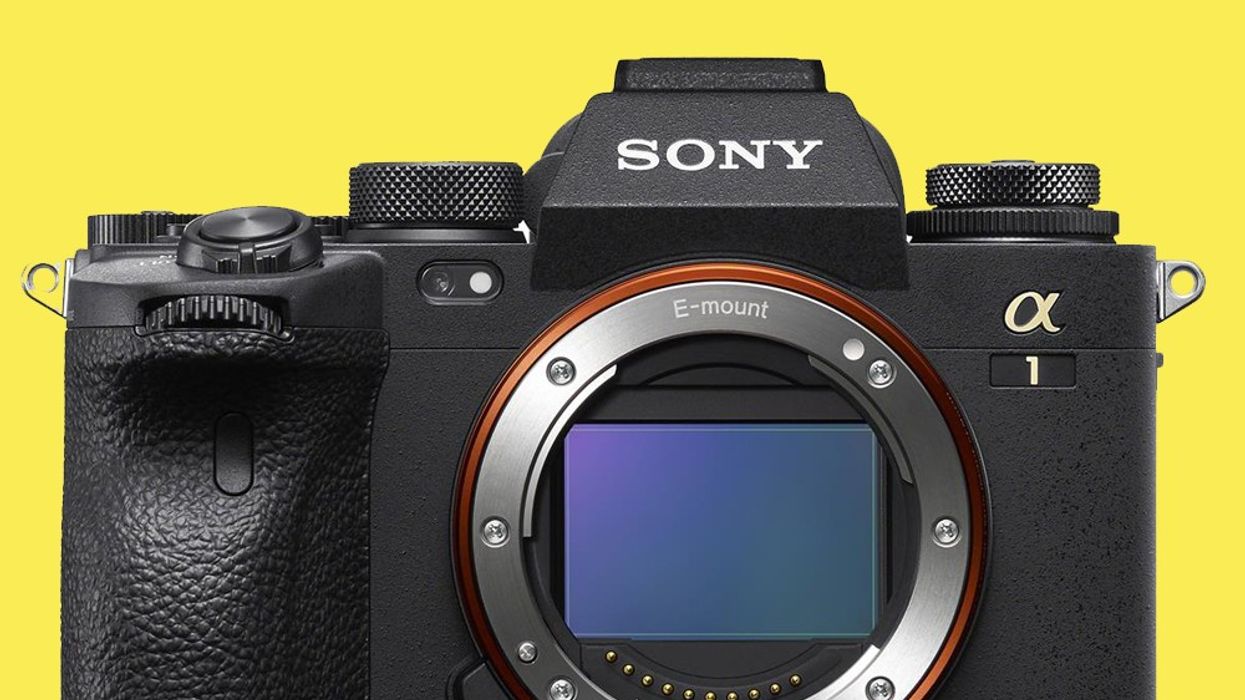Sony Surprises Filmmakers with 8K Alpha 1 Full-Frame Mirrorless Camera
Coming hot on the heels of the recent announcement of the Sony a7S III, the new Alpha 1 has impressive specs and a price to match.

We waited a long, long, long time for the arrival of the Sony a7S III. The Sony a7S II had been a huge hit with filmmakers when it was released in November 2014, with amazing low light performance and 4K resolution being its standout features. Sony was well ahead of all the major competition with its mirrorless E mount (adaptable easily to PL mount glass), full-frame sensor, and small body size.
By NAB 2017, though, folks were wondering about a Sony a7S III, hopefully upping the resolution, dynamic range, and color reproduction. This was early for users to be looking for a refresh, though, and a four-year cycle made more sense, so we waited through 2018. And 2019.
That update didn't come until the summer of 2020, when the a7S III finally came out. It had better menus (a major plus), a flip-out screen, better color reproduction, an internal stabilization sensor, and more. It stuck with 4K resolution, but by focusing on better autofocus and latitude, it was a major hit with users.
After the massive wait for the a7S III, it's a little surprising that only six months later, Sony has dropped the all-new Sony Alpha 1 (a1).
With its brand-new sensor promising 15 stops of dynamic range and 8K resolution up to 30p, and its 4K up to 120p, it's a master from a spec perspective. That 8K video is 10-bit 4:2:0, by the way. The camera can output 16-bit video over HDMI and has S-Cinetone, the new color science we saw in the FX9 and FX6 for better skin tone reproduction.
Sony has also pumped all of their autofocus power into this unit, including eye autofocus for both humans and animals. This is an area where Sony has long been a leader, and seeing some of those features get fully implemented in video is a huge step forward.
All of these crazy features really bring the specs into something like parity with the Canon R5, which was released last summer.
While it's obviously almost twice as expensive as the a7S III, it does seem likely those who purchased the a7S III will feel annoyed about the capabilities of the Alpha 1. The camera is clearly at the top of their small-body Alpha lineup for video now, but only side-by-side comparisons will show us how much it outperforms Sony's other offerings.
Sony Alpha 1

- 50.1MP full-frame stacked Exmor RS CMOS
- 8x more powerful, next generation BIONZ XR image processor
- 8K at 30p
- 4K 120p
For now, the a1 looks to be a dynamite camera that's going to deliver beautiful images. It's just interesting to wonder about the timing of these two cameras, being so close in the release cycle. The simplest answer is likely that, while we thought it was smart for Sony to focus on making better 4K, they were still working on their next-gen camera capable of 8K recording to compete with Canon.
What are your thoughts? Leave us a comment.











